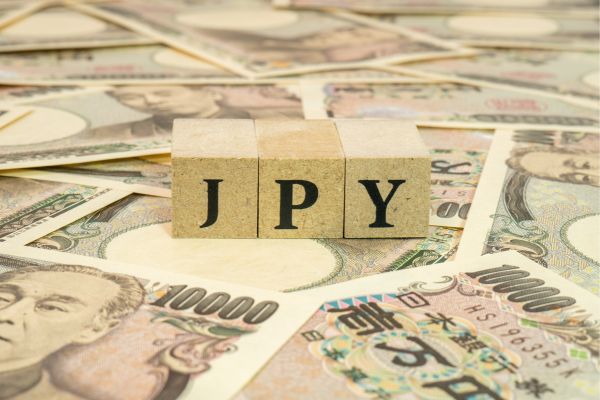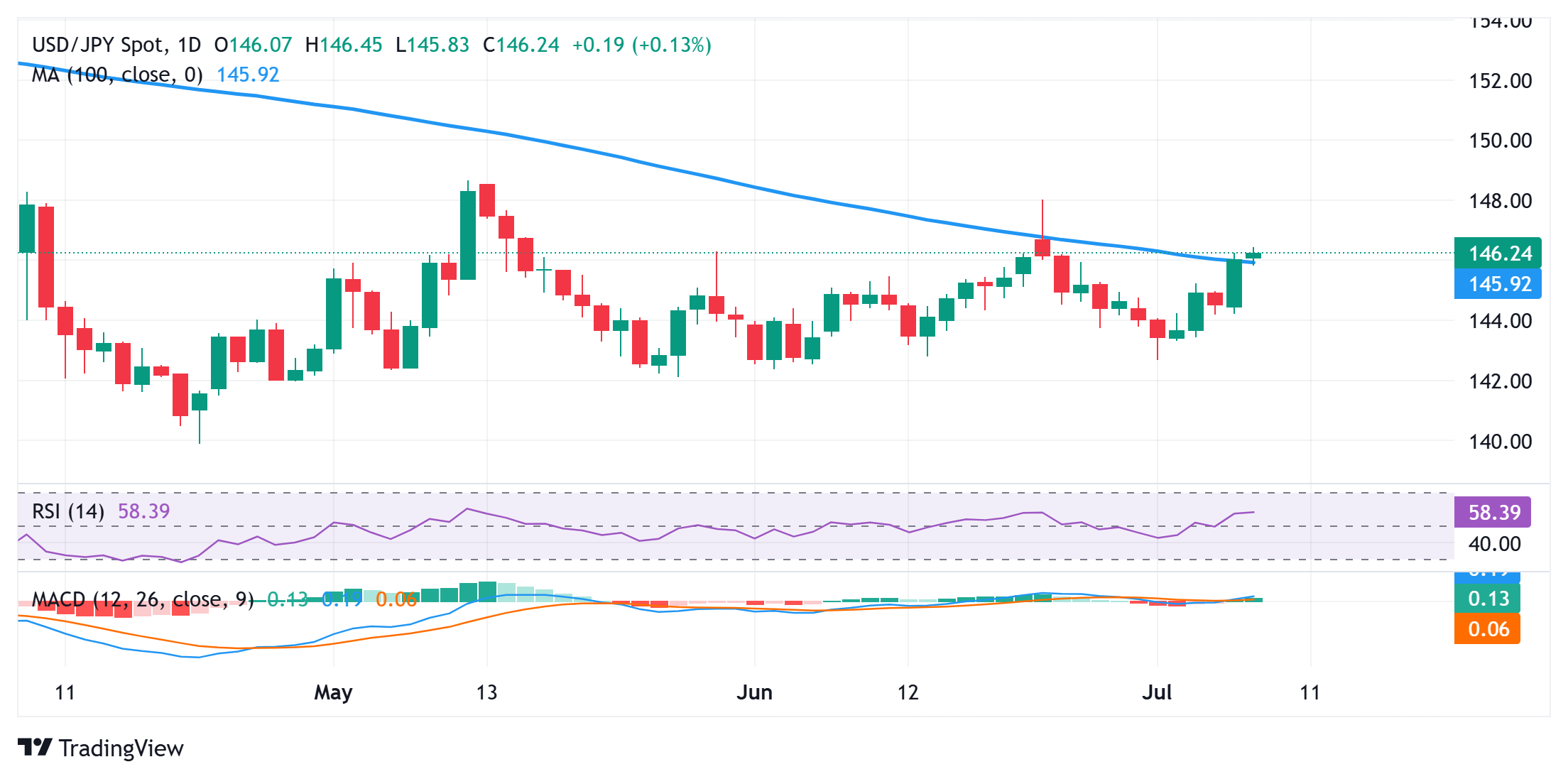
The Japanese Yen remains depressed as trade uncertainties temper BoJ rate hike bets.
The JPY bulls fail to gain any respite from a broadly weaker USD and the risk-off impulse.
The fundamental backdrop backs the case for a further appreciating move for USD/JPY.
The Japanese Yen (JPY) drifts lower against a weaker US Dollar (USD) for the second successive day and slides to over a two-week low during the Asian session on Tuesday. US President Donald Trump escalated the trade war and announced that his administration would impose a 25% tariff on goods imported from Japan, effective August 1. Adding to this, weak wage growth data released from Japan on Monday could further complicate the Bank of Japan’s (BoJ) path to normalising monetary policy and turn out to be a key factor weighing on the JPY.
The JPY bulls seem rather unimpressed and largely shrugged off data showing that Japan’s current account surplus rose more than expected, to ¥3,436.4 billion in May 2025 from ¥2,949.5 billion a year earlier. Meanwhile, concerns about the economic impact of Trump's tariffs and geopolitical risks stemming from fresh conflicts in the Middle East temper investors' appetite for riskier assets. This is evident from a sea of red across the global equity markets, which could support the safe-haven JPY and cap the USD/JPY pair amid renewed USD selling.
Japanese Yen bears look to seize control amid diminishing odds for an early BoJ rate hike
US President Donald Trump released the first batch of letters outlining higher trade tariffs against a slew of major economies and imposed 25% levy on Japan. Trump, however, extended the deadline for the imposition of new tariffs to August 1, leaving the door open for more trade negotiations.
Japanese Prime Minister Shigeru Ishiba said early this Tuesday that the US had proposed to continue talks until the new August 1 deadline. Japan hasn’t been able to reach an agreement with the US because the country kept defending what needs to be defended, Ishiba added further.
Government data released on Monday showed that the growth in Japan's nominal wages decelerated for the third straight month in May 2025 and inflation-adjusted real wages posted the steepest decline in 20 months. This backs the case for the Bank of Japan's caution in the near term.
Investors grew wary over the potential economic impact of Trump's reciprocal trade tariffs, triggering a fresh wave of the global risk-aversion trade. This could limit losses for the safe-haven JPY, which, along with the emergence of fresh US Dollar selling, should cap the USD/JPY pair.
Against the backdrop of a strong US Nonfarm Payrolls report on Friday, expectations that Trump's tariffs would underpin US inflation in the coming months might force the Federal Reserve to keep interest rates steady. This, in turn, favors the USD bulls ahead of FOMC minutes on Wednesday.
USD/JPY finds acceptance above the 100-day SMA; seems poised to climb further

From a technical perspective, the USD/JPY pair looks to build on the momentum beyond the 100-day Simple Moving Average (SMA). Given that oscillators on the daily chart have been gaining positive traction, some follow-through buying beyond the Asian session peak, around the 146.45 region, should allow spot prices to reclaim the 147.00 round figure. The momentum could extend further towards the 147.60 intermediate hurdle en route to the June monthly swing high, around the 148.00 mark.
On the flip side, corrective pullbacks might now find some support around the 145.65-145.60 horizontal zone. Any further slide could be seen as a buying opportunity and remain limited near the 145.00 psychological mark. The latter should act as a pivotal point, which if broken decisively could drag the USD/JPY pair to the next relevant support near the 144.35-144.30 area en route to the 144.00 round figure.
* The content presented above, whether from a third party or not, is considered as general advice only. This article should not be construed as containing investment advice, investment recommendations, an offer of or solicitation for any transactions in financial instruments.


